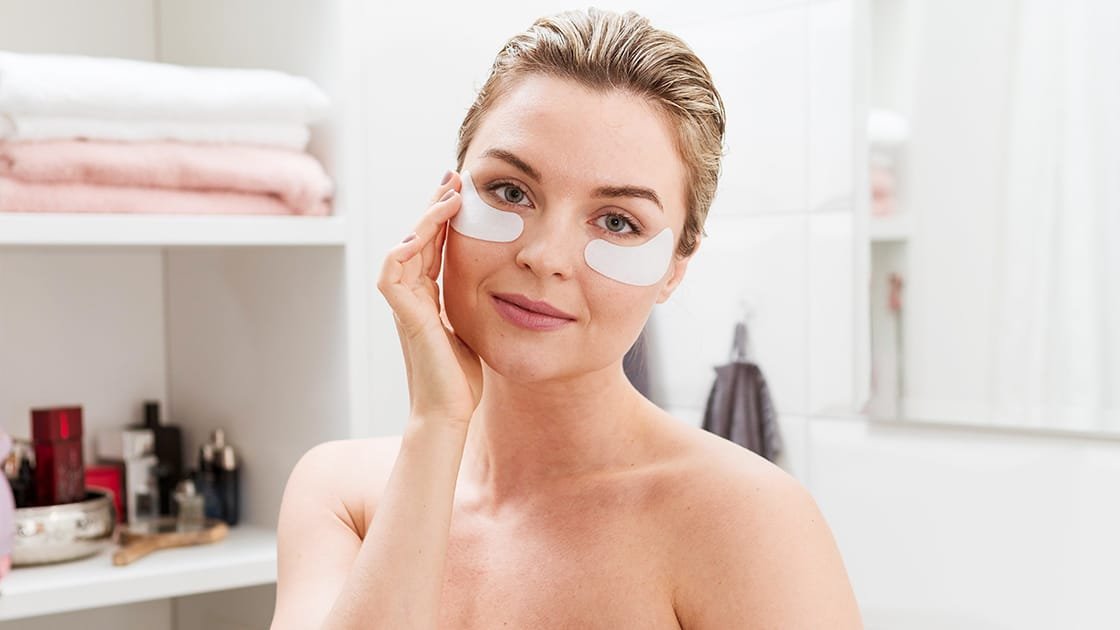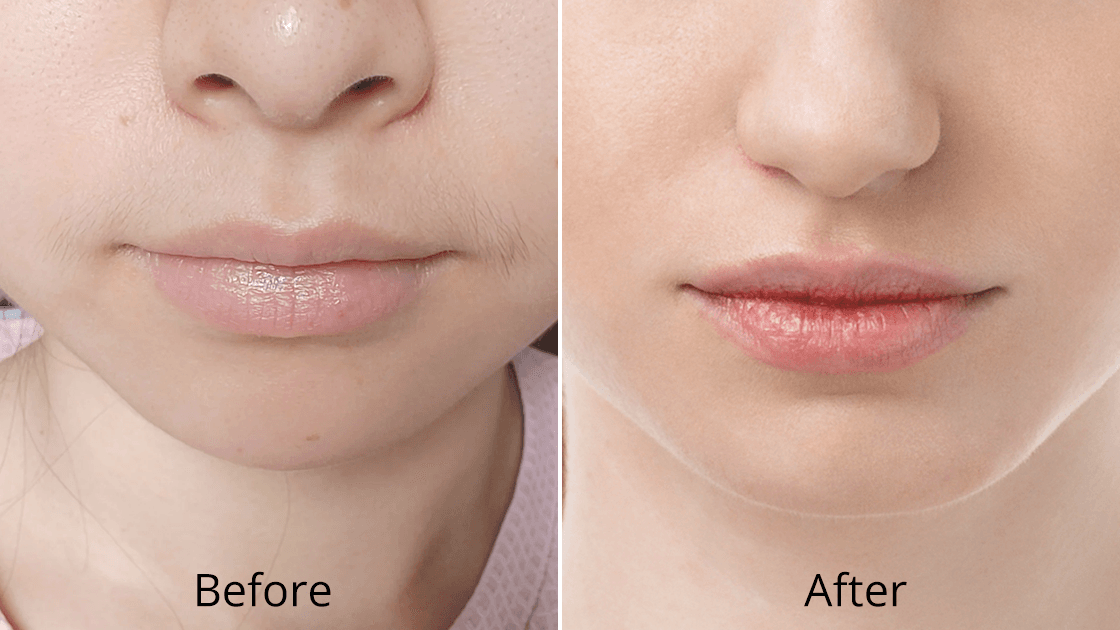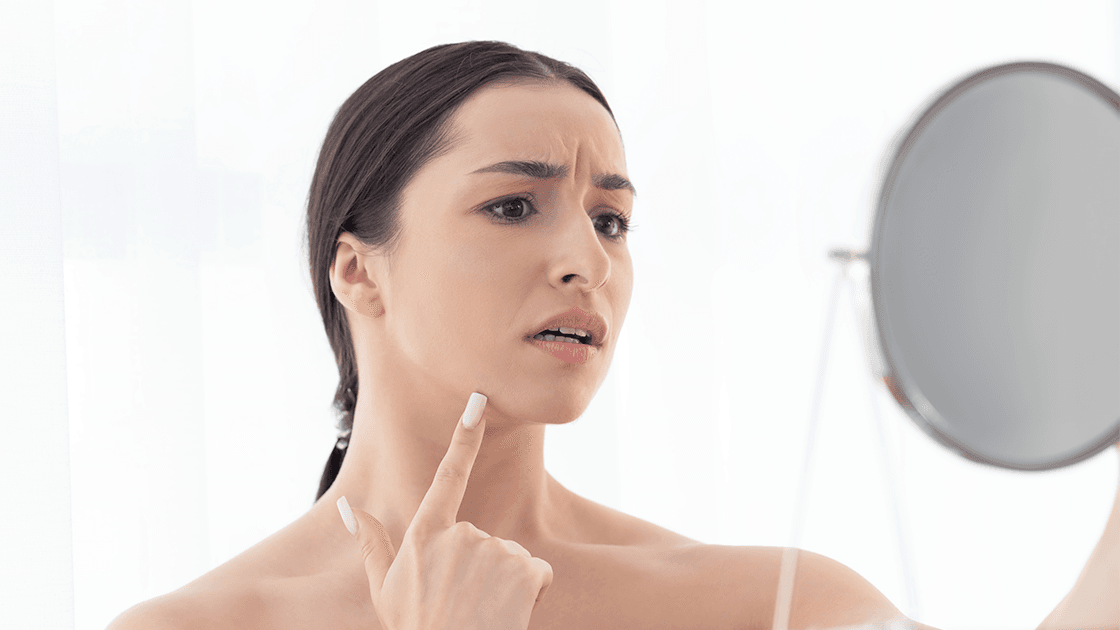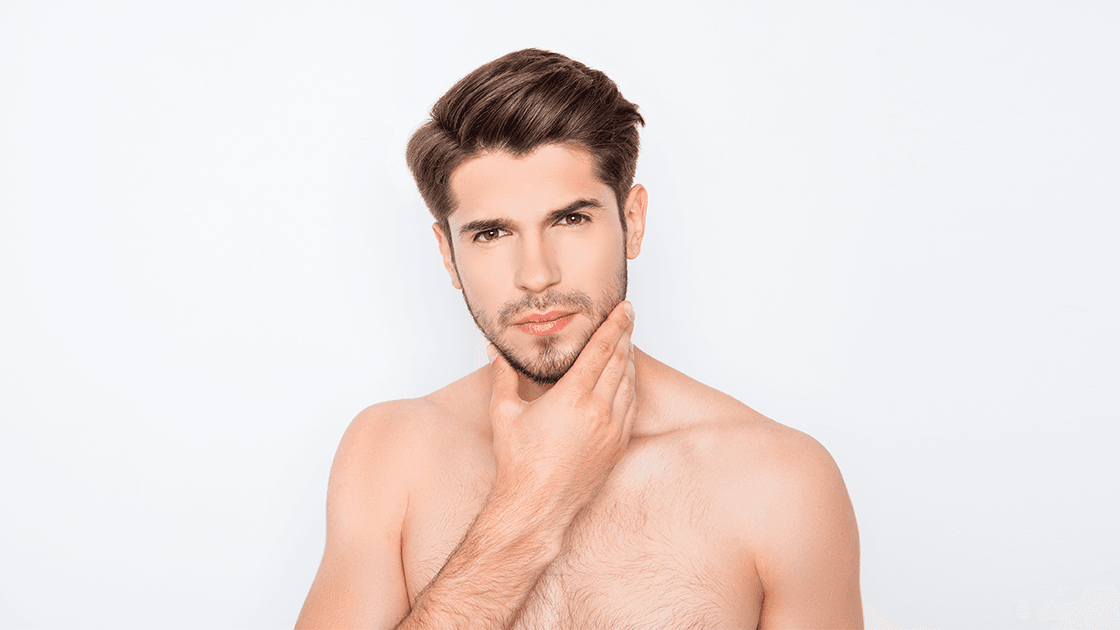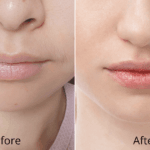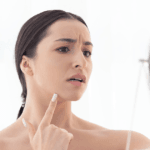1. Introduction: The First Lines of Aging
The delicate skin around our eyes often tells the story of our lives—every smile, every squint against the sun, every expression of joy or concern. Yet while these lines carry memories, many of us prefer to keep those memories private while presenting a more youthful, refreshed appearance to the world. Understanding how aging affects this sensitive area and exploring modern treatment options can help you make informed decisions about your skincare journey.
1.1 Why Crow’s Feet Show Up Early
Crow’s feet, medically known as lateral canthal lines, emerge as some of the earliest signs of facial aging due to the unique anatomical characteristics of the periorbital region. The skin surrounding the eyes is approximately 40% thinner than skin elsewhere on the face, containing fewer sebaceous glands and minimal subcutaneous fat for structural support. This delicate tissue experiences constant mechanical stress from the orbicularis oculi muscle, which contracts an estimated 15,000 to 20,000 times daily during normal blinking, squinting, and facial expressions. Additionally, the area has reduced melanin content, making it more vulnerable to ultraviolet radiation damage and photoaging processes that accelerate collagen degradation.
1.2 Common Fixes: Creams, Needles, and Surgery
Traditional approaches to treating crow’s feet have ranged from topical retinoids and peptide-based serums to more invasive interventions like botulinum toxin injections and blepharoplasty procedures. While topical treatments can provide modest improvements in skin texture and hydration, they often fail to address the deeper structural changes in dermal collagen and elastin networks. Botulinum toxin injections, though effective for dynamic wrinkles, require repeated treatments every three to four months and carry risks of temporary facial paralysis, ptosis, or asymmetry when administered near the delicate eye area. Surgical options like blepharoplasty offer dramatic results but involve significant downtime, potential complications, and irreversible alterations to facial anatomy.
1.3 The Shift Toward Non-Invasive Technology in Aesthetic Care
The aesthetic medicine landscape has witnessed a paradigm shift toward non-invasive, energy-based treatments that stimulate the body’s natural healing mechanisms rather than relying solely on temporary fixes or surgical intervention. This evolution reflects both patient preferences for safer, more natural-looking results and technological advances that enable precise delivery of therapeutic energy to target tissues. Modern consumers increasingly seek treatments that enhance their natural beauty while maintaining their ability to express emotions freely, without the “frozen” appearance sometimes associated with injectable treatments. This growing demand has driven innovation in radiofrequency technology, making it a cornerstone of contemporary aesthetic practice.
2. What Is RF (Radiofrequency) Therapy?
Radiofrequency therapy represents a sophisticated fusion of physics and medicine, harnessing electromagnetic energy to rejuvenate skin at the cellular level. Unlike topical treatments that work superficially or injectables that temporarily alter muscle function, RF therapy addresses the fundamental cause of aging by stimulating the body’s own collagen production mechanisms.
2.1 A Clinically Proven Skin Rejuvenation Method
Radiofrequency therapy has demonstrated significant efficacy in clinical trials, with studies showing that RF devices are safe and effective for 肌の若返り, proving more effective than commercially available anti-aging cosmetics. The technology works by delivering controlled electromagnetic energy at frequencies between 0.3 and 10 MHz, creating thermal effects in the dermis that trigger immediate collagen contraction and subsequent neocollagenesis. Clinical studies have shown improvement in skin laxity and fine wrinkles after just two to three treatments, with 100% of patients showing improvement after the third treatment. The procedure utilizes the principle of resistive heating, where electrical current encounters resistance in tissue, generating heat that reaches therapeutic temperatures of 60-70°C in targeted areas while maintaining surface skin temperature below 45°C.
2.2 How RF Stimulates Deep-Tissue Repair Without Damaging the Surface
The mechanism of action involves electromagnetic waves penetrating the epidermis without causing surface damage, reaching the papillary and reticular dermis where collagen fibers reside. RF therapy uses energy waves to heat the deep layer of skin known as the dermis, stimulating collagen production through controlled thermal injury. This process triggers the wound healing cascade, activating fibroblasts to produce new collagen, elastin, and glycosaminoglycans. The treatment creates a controlled thermal zone that denatures existing collagen fibers, causing immediate contraction and tightening effects, while simultaneously initiating inflammatory pathways that promote tissue remodeling over subsequent weeks and months. Modern RF devices incorporate real-time temperature monitoring and impedance feedback systems to ensure optimal energy delivery while preventing thermal damage to surrounding tissues.
2.3 RF vs. Lasers or Injectables: A Safer Choice for Delicate Eye Areas
Compared to ablative lasers that remove layers of skin or injectables that temporarily paralyze muscles, RF therapy offers a gentler approach particularly suited for the delicate periorbital region. RF-based systems are appropriate for any skin type, unlike certain laser treatments that may cause hyperpigmentation in darker skin tones. The technology’s ability to deliver uniform heating at controlled depths makes it ideal for treating the thin, sensitive skin around the eyes without causing surface trauma, prolonged erythema, or post-inflammatory hyperpigmentation. Unlike botulinum toxin injections, which can occasionally cause drooping eyelids or asymmetry when administered near the eye area, RF therapy preserves natural facial expressions while improving skin quality and texture through biological processes.

3. Why RF Is Ideal for Treating Crow’s Feet
The unique characteristics of crow’s feet make them particularly responsive to radiofrequency treatment. The combination of thin skin, reduced subcutaneous support, and repetitive muscle movement creates an ideal environment for RF energy to penetrate effectively and stimulate meaningful tissue remodeling.
3.1 RF Rebuilds Collagen Where You Need It Most
The periorbital area’s anatomy makes it exceptionally responsive to RF-induced collagen stimulation. The main physiological effects observed in studies were the contraction of collagen (short-term effect) and the stimulation of collagen synthesis through the tissue repair process (long-term effect). The treatment specifically targets the dermal-epidermal junction and superficial dermis, where age-related collagen loss is most pronounced around the eyes. RF energy creates controlled thermal zones that activate heat shock proteins, initiating a cascade of molecular events that upregulate collagen type I and III synthesis. This process is particularly effective in the periorbital region because the thinner skin allows for more precise energy delivery and better penetration to the target tissue layers where structural proteins provide skin support and elasticity.
3.2 Smooths Wrinkles Without Needles, Downtime, or Peeling
RF skin tightening is a nonsurgical treatment that firms and lifts sagging skin without the complications associated with invasive procedures. The treatment requires no incisions, injections, or chemical peels, making it ideal for patients who cannot afford significant downtime or wish to avoid needle-based treatments. Most patients experience only mild erythema that resolves within hours, allowing them to return to normal activities immediately following treatment. The gradual improvement process means that changes appear natural and progressive, avoiding the sudden alterations that can occur with surgical interventions. This gentle approach is particularly beneficial for the eye area, where swelling, bruising, or prolonged healing times could significantly impact daily activities and professional obligations.
3.3 Delivers Natural-Looking, Progressive Results
Unlike treatments that produce immediate but temporary changes, RF therapy creates improvements that develop gradually over several months as new collagen matures and remodels. The treatment speeds up cell turnover, so the skin gets firmer and thicker over time. This progressive enhancement allows for subtle improvements that maintain natural facial expressions while reducing the appearance of fine lines and wrinkles. The biological nature of the improvement means that results integrate seamlessly with your existing facial features, enhancing rather than altering your natural appearance. Patients often report that friends and family notice they look “refreshed” or “well-rested” without being able to identify specific changes, which many consider the hallmark of successful aesthetic treatment.
3.4 Suitable for All Fitzpatrick Skin Types
RF-based systems are appropriate for any skin type, making them uniquely inclusive compared to many laser treatments that may cause complications in darker skin tones. The technology’s mechanism of action—heating deeper tissue layers rather than targeting superficial chromophores—eliminates the risk of post-inflammatory hyperpigmentation that can occur with IPL or certain laser treatments. This universality is particularly important for crow’s feet treatment, as the delicate eye area in individuals with darker skin types is especially prone to pigmentation changes following inflammatory processes. RF therapy’s ability to stimulate collagen production without causing surface damage makes it an excellent choice for patients of all ethnic backgrounds seeking periorbital rejuvenation.
4. What to Expect During an RF Eye Treatment
Understanding the treatment process helps patients prepare mentally and physically for their RF therapy sessions. The procedure combines advanced technology with careful attention to patient comfort and safety, ensuring optimal results while minimizing any potential discomfort.
4.1 How to Prepare for Your First Session
Preparation for RF treatment begins with a comprehensive consultation to assess skin condition, medical history, and treatment goals. Patients should discontinue retinoid use for 3-5 days before treatment to reduce skin sensitivity, and avoid excessive sun exposure for at least two weeks prior to the session. On the day of treatment, arrive with clean, makeup-free skin to ensure optimal energy delivery and reduce the risk of complications. Remove contact lenses and inform your provider about any metal implants, pacemakers, or pregnancy, as these may contraindicate treatment. Hydrate well in the days leading up to treatment, as well-hydrated skin responds better to RF energy. Additionally, avoid blood-thinning medications or supplements unless medically necessary, as these may increase the risk of temporary swelling or bruising.
4.2 What Happens During the Procedure
The treatment begins with thorough skin cleansing and application of a conductive gel to ensure optimal energy transmission. Your provider will adjust the RF device settings based on your skin type, concern severity, and tolerance level. The treatment handpiece is moved systematically across the periorbital area, delivering controlled pulses of radiofrequency energy while monitoring skin temperature to ensure safety and efficacy. Most patients describe the sensation as a warm, tingling feeling rather than painful, though sensitivity may vary. The provider will continuously communicate with you about comfort levels and adjust parameters as needed. Eye protection may be provided depending on the specific device used, and the entire treatment typically takes 20-30 minutes for the eye area. Multiple passes may be performed to ensure comprehensive coverage of the treatment zone.
4.3 Post-Treatment Advice for Safer, Better Results
Expect mild redness and swelling: This is normal and usually subsides within 2–4 hours.
Apply a gentle, fragrance-free moisturizer: Helps keep the skin hydrated and supports healing.
Avoid harsh skincare products: Skip exfoliants, acids, and retinoids for 24–48 hours to prevent irritation.
Use sun protection daily: Apply a broad-spectrum SPF 30 or higher and wear sunglasses to shield the eye area.
Stay hydrated: Drink plenty of water to aid skin recovery.
Use a humidifier if needed: Especially helpful in dry environments to prevent skin dehydration.
Avoid strenuous activity for 24 hours: Sweating can irritate the treated skin.
Follow up with your provider: Stick to your recommended treatment plan and monitor progress with professional guidance.
4.4 When You’ll See Results: Patient Timelines
RF treatment results develop gradually as collagen remodeling occurs over time. Initial improvements may be noticed within 2-4 weeks as immediate collagen contraction effects become apparent, with continued enhancement over the following 3-6 months as new collagen synthesis reaches its peak. Most patients observe the most significant improvements between 8-12 weeks post-treatment, when neocollagenesis is most active. The gradual nature of improvement means that changes appear natural and progressive rather than sudden or artificial. Individual results vary based on factors including age, skin condition, lifestyle factors, and adherence to post-treatment care instructions. Some patients may notice subtle improvements after just one treatment, while others require the full recommended series to achieve optimal results. Peak results typically occur 4-6 months after completing the recommended treatment series, with benefits lasting 12-18 months or longer with proper maintenance.
5. Treatment Frequency and Longevity
Optimal RF treatment outcomes require a strategic approach to session scheduling and maintenance. Understanding the biological timeline of collagen production helps patients set realistic expectations and commit to the treatment protocol necessary for meaningful results.
5.1 Why One Session Isn’t Enough
Collagen synthesis and remodeling occur over extended periods, requiring multiple treatment sessions to achieve optimal cumulative effects. Each RF session creates controlled thermal injury that initiates the wound healing cascade, but this process takes time to complete. A single treatment may produce modest improvements, but the full potential of RF therapy is realized through a series of treatments that progressively build upon each other. The skin’s natural aging process continues even during treatment, so multiple sessions help overcome ongoing collagen degradation while stimulating new protein synthesis. Additionally, the eye area’s unique anatomy—with its thin skin and constant muscle movement—requires repeated stimulation to achieve lasting structural changes. Clinical studies consistently demonstrate that patients receiving series of treatments achieve significantly better results than those receiving single sessions.
5.2 Recommended Protocol: Number of Sessions and Spacing
The optimal treatment protocol typically consists of 3-5 sessions spaced 4-6 weeks apart, allowing sufficient time for collagen remodeling between treatments while maintaining therapeutic momentum. This spacing aligns with the natural collagen production cycle, ensuring that each subsequent treatment builds upon the cellular changes initiated by the previous session. Patients with more advanced aging or deeper wrinkles may benefit from additional sessions, while those with mild concerns may achieve satisfactory results with fewer treatments. The specific protocol should be customized based on individual skin assessment, patient goals, and response to initial treatments. Some providers recommend a more aggressive approach with treatments every 2-3 weeks for the first series, followed by maintenance sessions every 6-12 months. The key is maintaining consistency while allowing adequate healing time between sessions.
5.3 Maintenance Treatments: Sustaining the Results
After 6 months, 40% of patients believed they had over 50% improvement in their facial contouring while 27% saw more than 75% improvement, demonstrating the lasting benefits of RF therapy. However, maintaining these results requires ongoing treatment as the natural aging process continues. Maintenance sessions are typically recommended every 6-12 months, depending on individual factors such as age, skin condition, sun exposure, and lifestyle choices. These maintenance treatments help preserve the collagen improvements achieved during the initial treatment series while addressing new signs of aging that may develop over time. The frequency of maintenance treatments often decreases over time as patients build a foundation of healthy collagen, but consistent follow-up care is essential for long-term success. Some patients choose to combine maintenance RF treatments with complementary procedures for comprehensive anti-aging benefits.
5.4 Cost and Value: RF vs. Botox and Fillers
When evaluating the cost-effectiveness of RF therapy, it’s important to consider both immediate expenses and long-term value. While the upfront cost of a RF treatment series may seem higher than a single botulinum toxin injection, the longer-lasting results and cumulative benefits often provide superior value over time. Botulinum toxin treatments require repeat injections every 3-4 months, with costs accumulating significantly over years of treatment. RF therapy’s results typically last 12-18 months or longer, requiring fewer maintenance sessions and potentially reducing overall treatment costs. Additionally, RF therapy improves skin quality and texture in ways that injectables cannot, providing comprehensive rejuvenation rather than targeting specific wrinkles. The investment in RF therapy often pays dividends through improved confidence, reduced need for makeup, and the satisfaction of achieving natural-looking improvements that enhance rather than alter facial features.
6. Clinical Evidence: Does RF Really Work for Crow’s Feet?
The efficacy of radiofrequency therapy for treating crow’s feet is supported by extensive clinical research and real-world evidence. Understanding the scientific foundation behind RF treatment helps patients make informed decisions about their skincare investments.
6.1 Peer-Reviewed Studies on RF for Eye Wrinkles
By 2024, RF microneedling has continued to demonstrate its efficacy through a variety of clinical studies, with controlled trials showing statistically significant improvement in skin texture and wrinkle depth among participants. Multiple peer-reviewed studies have documented RF therapy’s effectiveness for periorbital wrinkles, with research published in prestigious dermatology journals consistently showing positive outcomes. Clinical studies report that improvement in skin laxity and fine wrinkles was seen after the second treatment in 19 of 20 patients, with 100% of patients showing improvement after the third treatment. These studies employ rigorous methodologies including randomized controlled trials, standardized photography, and objective measurement tools to quantify improvements. The research demonstrates not only statistical significance but also clinical relevance, with improvements that are both measurable and noticeable to patients and observers.
6.2 Dermatologist and Aesthetician Endorsements
Leading dermatologists and aesthetic practitioners worldwide have incorporated RF therapy into their treatment protocols based on clinical evidence and patient satisfaction. Professional organizations including the American Society for Dermatologic Surgery and the American Academy of Dermatology have recognized RF as a valuable tool for non-invasive skin rejuvenation. Many experts consider RF therapy a first-line treatment for patients seeking improvement in skin texture and mild to moderate laxity without the risks associated with surgery. The technology’s safety profile and predictable results have made it a preferred choice for treating the delicate eye area, where precision and gentle treatment are paramount. Professional endorsements are supported by extensive training programs and certification requirements that ensure practitioners can safely and effectively deliver RF treatments.
6.3 Before-and-After Images: What Real Results Look Like
Clinical photography documenting RF treatment outcomes reveals the gradual yet significant improvements possible with consistent treatment. Before-and-after images typically show reduction in fine line depth, improvement in skin texture, and enhanced firmness around the eyes. The most dramatic results are often seen in patients with mild to moderate aging changes, though even those with more advanced concerns can achieve meaningful improvements. Real patient testimonials consistently report high satisfaction rates, with many noting that the improvements look natural and enhance their overall appearance without creating an “overdone” look. The photographic evidence demonstrates that RF therapy can effectively address not only wrinkles but also skin texture irregularities, pore size, and overall skin quality in the periorbital region.

7. Is RF Safe for Everyone?
While RF therapy boasts an excellent safety profile, certain considerations and contraindications must be evaluated to ensure appropriate patient selection and optimal outcomes. Understanding these factors helps both patients and practitioners make informed decisions about treatment suitability.
7.1 Who Should Avoid RF Near the Eyes
Active infections or inflammatory skin conditions in the treatment area
Open wounds or broken skin
Implanted electronic devices such as pacemakers, defibrillators, or cochlear implants
Pregnant or breastfeeding women
History of keloid scarring or abnormal wound healing
Photosensitizing medications
Autoimmune conditions affecting skin healing
7.2 Common Side Effects (And How Rare They Are)
Mild redness (erythema) and slight swelling
Temporary skin sensitivity
Mild discomfort during treatment
Temporary pigmentation changes (rare)
Temporary numbness or altered sensation (very rare)
Burns or permanent scarring (extremely rare)
7.3 Combining RF with Other Treatments: Yes or No?
RF療法 can be safely combined with many other aesthetic treatments when properly planned and executed. Combining RF with treatments that work through different mechanisms—such as topical retinoids, vitamin C serums, or gentle chemical peels—can provide synergistic benefits for comprehensive skin rejuvenation. However, certain combinations should be avoided or carefully timed to prevent complications. Ablative laser treatments, deep chemical peels, or aggressive exfoliation procedures should be separated from RF sessions by several weeks to allow proper healing. Injectable treatments like botulinum toxin or dermal fillers can be performed in conjunction with RF therapy, though timing and technique require careful consideration. The key is working with experienced practitioners who understand how different treatments interact and can develop safe, effective combination protocols tailored to individual patient needs.
8. Conclusion: Your Eyes Deserve a Wrinkle-Free Future
Say goodbye to invasive procedures and hello to smoother skin—radiofrequency (RF) therapy offers a safe, non-invasive way to reduce crow’s feet. Backed by science, RF works with your body’s natural healing to boost collagen and gradually soften wrinkles without needles or downtime. Unlike temporary fixes, RF delivers long-lasting, natural-looking results while preserving your facial expressions. Whether you’re addressing early signs of aging or deeper lines, treatments can be tailored to your needs and suit all skin types. With its strong safety profile and zero recovery time, RF therapy fits seamlessly into your lifestyle. It’s gentle enough for the delicate eye area yet powerful enough to deliver noticeable improvements. As you explore your options, choose a solution that aligns with your goals and comfort. RF therapy enhances your natural beauty while honoring your individuality. The future of eye rejuvenation is here—gentle, effective, and made for real life.
9. Frequently Asked Questions (FAQ)
Not at all. RF stimulates collagen naturally without paralyzing muscles, so your expressions stay intact — just smoother and more refreshed.
It’s best to wait at least 12–24 hours to avoid irritating the treated area. Let your skin breathe and heal first.
Yes — but only after proper healing. Always consult your provider to customize the settings around any prior treatments.
Eye creams are surface-level. RF penetrates deep, stimulating collagen where creams can’t reach. They can complement each other, but RF delivers longer-lasting results.
Think of RF like working out — results build over time, and maintenance sessions every few months help sustain your youthful look.
Absolutely. RF is great for early intervention, boosting collagen before wrinkles set in — prevention is the new anti-aging!
